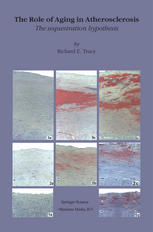

Most ebook files are in PDF format, so you can easily read them using various software such as Foxit Reader or directly on the Google Chrome browser.
Some ebook files are released by publishers in other formats such as .awz, .mobi, .epub, .fb2, etc. You may need to install specific software to read these formats on mobile/PC, such as Calibre.
Please read the tutorial at this link: https://ebookbell.com/faq
We offer FREE conversion to the popular formats you request; however, this may take some time. Therefore, right after payment, please email us, and we will try to provide the service as quickly as possible.
For some exceptional file formats or broken links (if any), please refrain from opening any disputes. Instead, email us first, and we will try to assist within a maximum of 6 hours.
EbookBell Team

5.0
18 reviewsThe cover of this book summarizes the central features of the sequestration hypothesis: Commonplace appearances seen in human coronary artery, fat stained in paraffin seetions by a new technique explained in Chapter Eleven, are arranged to suggest pathways of evolution toward atheroma. The hypothesis formulated and defended in the pages ofthis book is this: Fibroplasia progresses upward in column "a" from "la" to "3a" as a characteristic feature of aging. This starts sooner and progresses faster in men than in wornen. Numbers ofSMC's remain essentially constant so that fibroplasia per SMC steadily increases. The rise upward conveys an increasing propensity to sequester atherogenic lipids, causing transition rightward into column "b". Sequestered extracellular lipid then attracts fatty streak elements, especially foam cells and lyrnphocytes, to propel the arterial site rightward into column "c". Frame "lc" corresponds to the AHA Lesions Committee classification type IIb, the progression resistant fatty streak arising directly without prior lipid sequestration; this can progress to atheroma, but slowly after much delay, although extreme provocation can accelerate the process. Such progression is rightward toward atherorna with thin cap, not upward toward fibroplastic thickening. Frame "2c" corresponds to the AHA classification, type Ha, progression prone fatty streaks. These readily evolve into atheroma, again by horizontal progression.